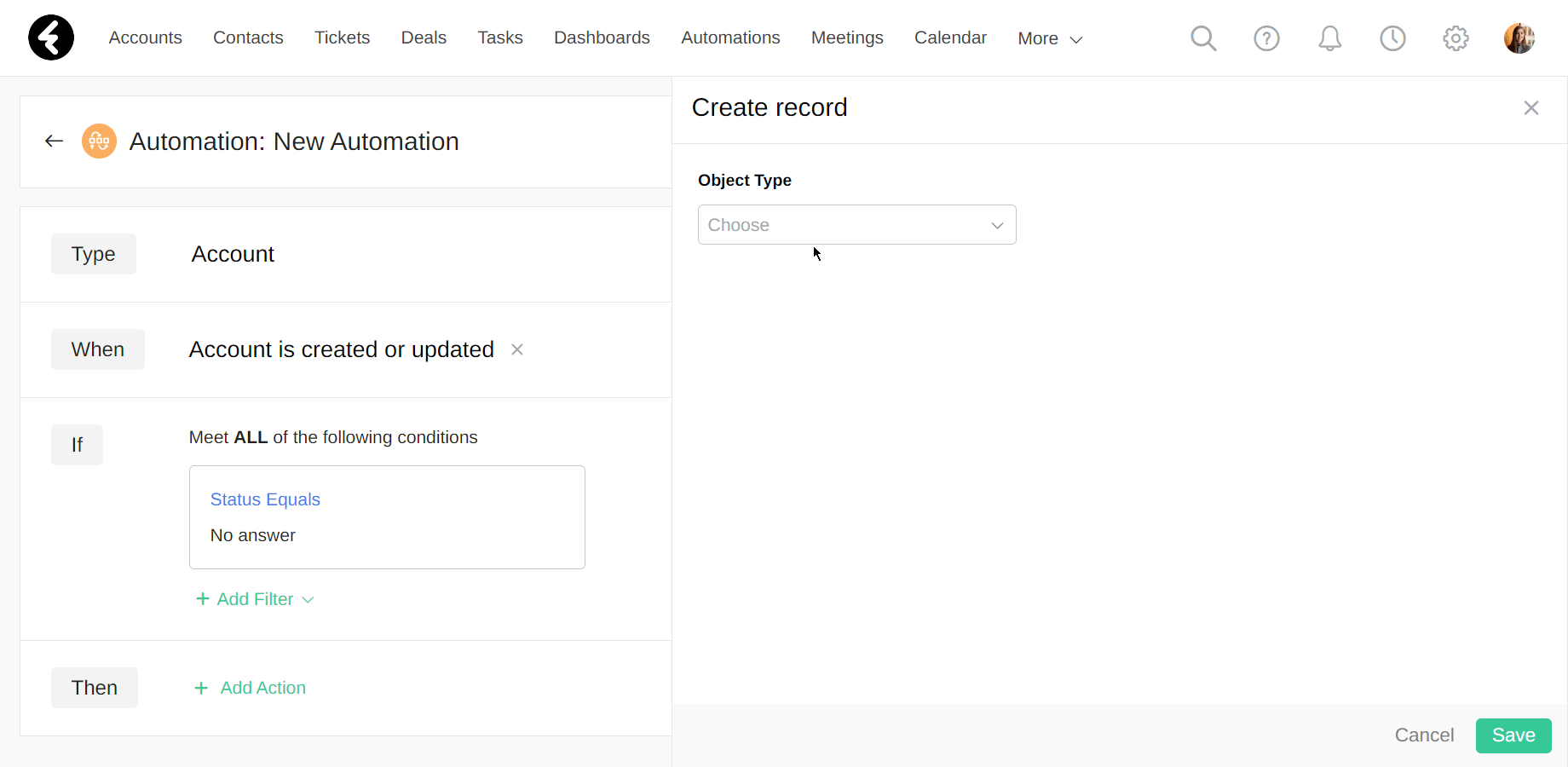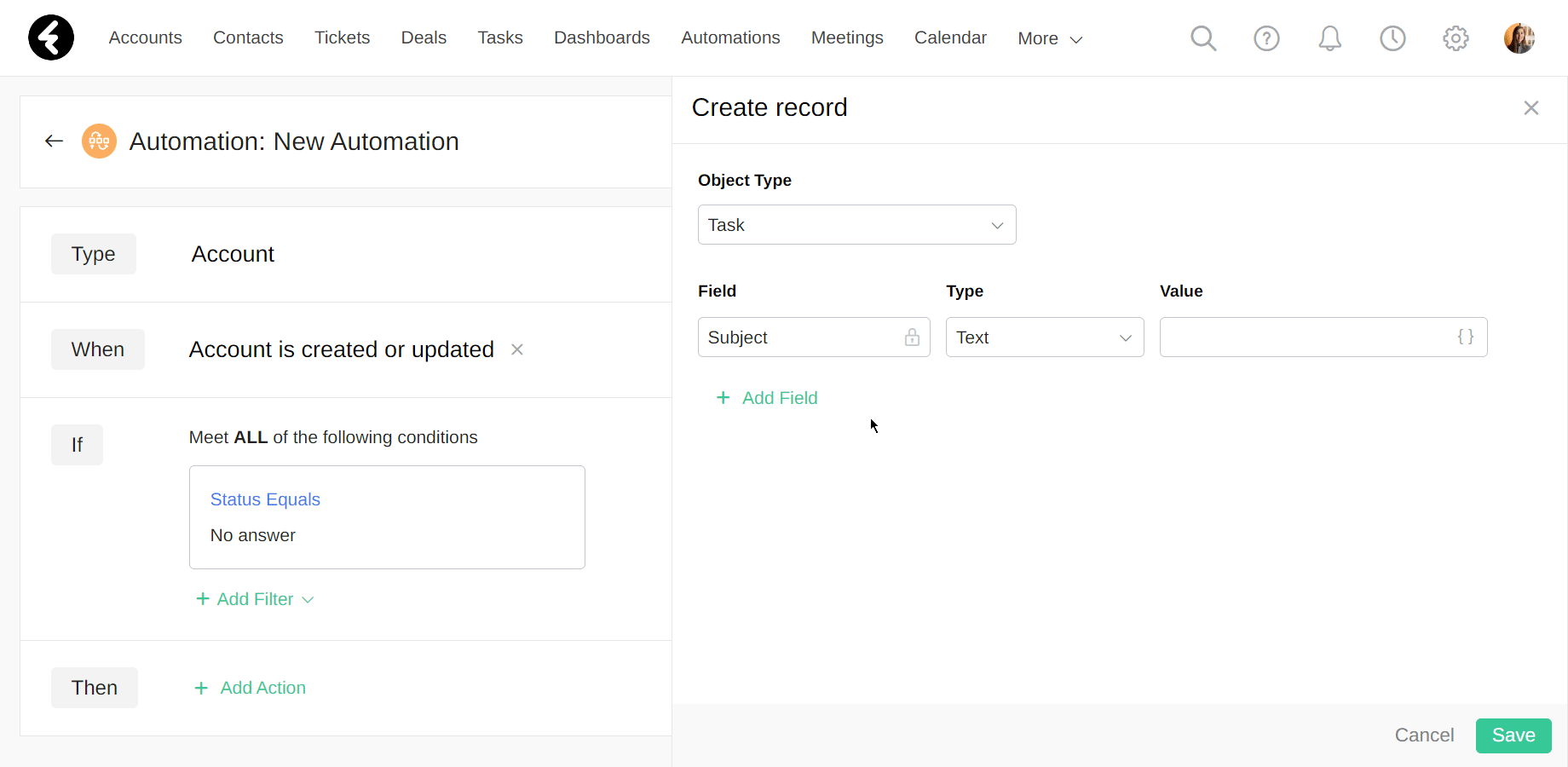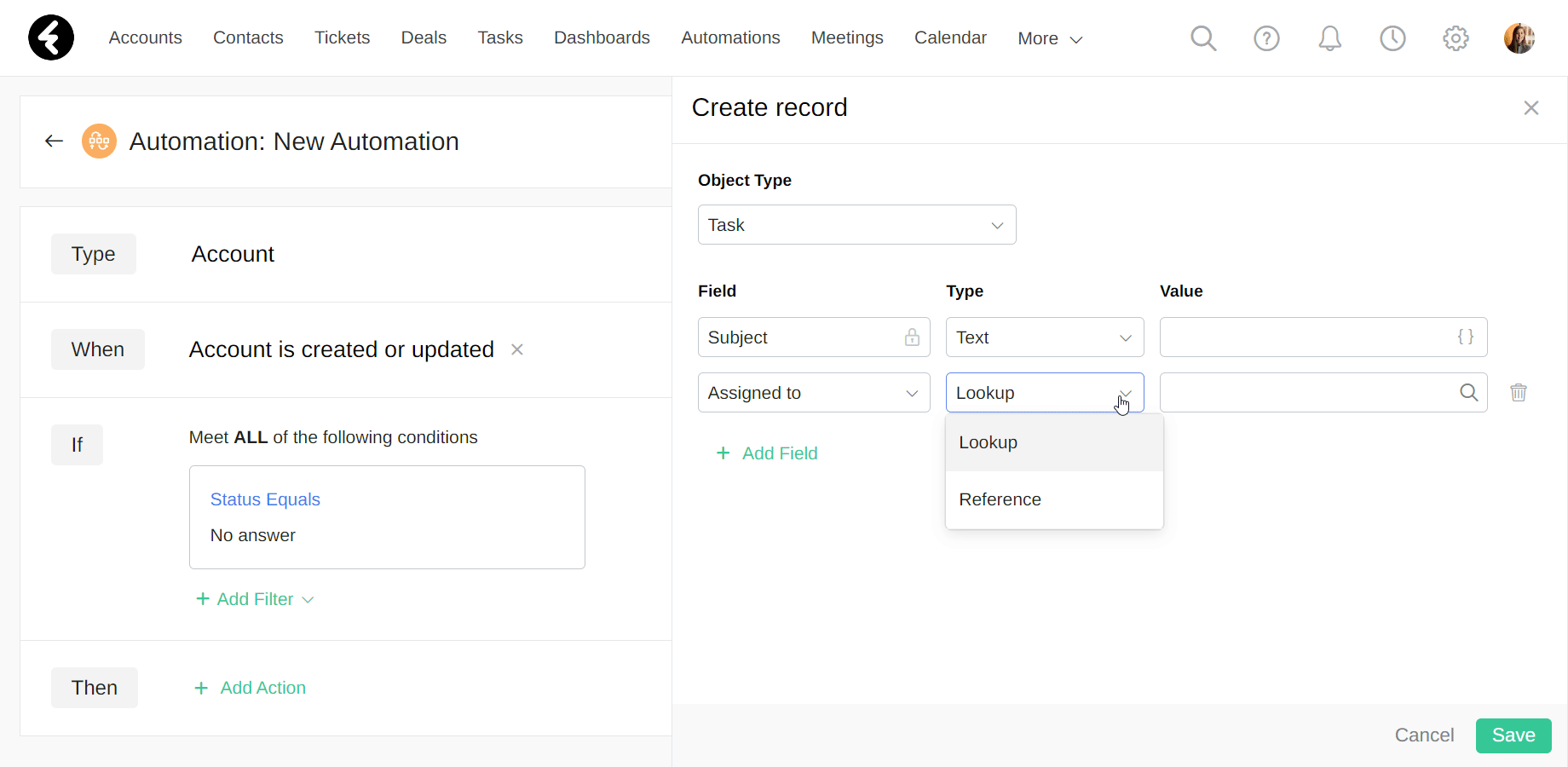Create record automations
Automation set up
A great way to automate your workflow is through Create Record automations. For example, you can create an automation which will automatically generate tasks under the Tasks object whenever an account's status is set to No answer. In this way you’ll ensure that account managers remember to call back clients who haven’t answered.
To start, create an automation where the object type is set to Account and the When is set to Account is created or updated. Then make sure the If filter is set so that the field is Status, the operator is Equals, and the Value is No Answer. You can now select the Create Record action under Then. This will open a box on the right where you can set which type of record you’d like to create and the fields within it.

Object type
You’ll find the Object Type section at the top of the Create record box. This is the first step to creating a new record. By clicking the Choose box, you’ll open a searchable dropdown list of all the system objects. Here you’ll choose which object type your new record will belong to. For example, if you’d like to create a new task record for a user, select the Task option. Once you’ve selected an object type, you can begin filling out the fields for your new record, as is explained below. If you’d like to switch the object type you’ve selected, simply click on the dropdown list and select a new object.

Adding fields
Once you’ve selected the type, you can set fields which will be filled in automatically for each newly created record. For example, you can set fields so that each newly created task will be assigned to a user and have a due date, related account, subject, and more. Each field is represented as a row in the fields section. Each row has three columns which need to be filled out, the Field, Type, and Value, which are explained in detail below. To add another field to be set, simply click + Add Field, which will add a new row. You can remove a row at any time by clicking the trash icon on the right.
In the Field column you’ll find a list of all the fields which belong to the object selected in the Object Type section above. After adding in a new row, click on the empty field box to open the searchable dropdown list of fields. Then simply search for the field you’d like to add and click on it. For example, if you’ve selected the Task object, you may wish to set the Subject, Assigned To, and Due Date fields. Each field can only be added once. If you’ve already added all the fields within the selected object, the dropdown list will display the message No matches found. To switch a field you’ve already selected, simply click on it to open the dropdown and select a new field.

Type and value
Once you’ve selected a field, you can set its type and value. The Type sets which options can be used in the Value column. The Value will set the new value of the selected field, and will change dynamically based on which type you select. Both the type and the value options will be locked in each row until the field column is filled out. The options provided in the type are based on the type of the field selected in the Field column. For almost every field type, three options are available which are each explained below.
Field type
The first option will always exist, and displays the field type of the field selected in Field. By selecting this option, the Value box will let you manually set the value as any value which matches the field type requirements. For example, if you select the Assigned To field, the type option here will be Lookup, and by selecting it the value box will let you input a related record. For details on all the field types, click here.
Reference
The reference option lets you choose a different field in the system to set as the value of the field selected under Field. By selecting this option, the Value box will contain a list similar to the one displayed in the Field column, including related fields. However, this list will only contain fields which match the type of the field selected. For example, by selecting the Assigned To lookup field, only other lookup fields will be displayed. Picklist fields will not have this option, as their value must be selected from the prebuilt options. Continuing the above example, you can use this option to automatically assign your newly created task to the account manager.

Formula
By selecting the formula option, the Formula Editor will appear below the row where you’ll be able to build a formula. This formula will calculate the value of the selected field, such as setting a date to the current day, a week from now, and more. At the bottom of the formula editor you’ll find a field dropdown box, a function dropdown box, and operators. Use the field box to search for and select fields to use as part of your formula. By clicking on a field, its API name will be added to the formula editor and can be used as a variable. Use the function box to click on and add functions such as NOW, TRIM, IF, and many more. The operators at the bottom of the editor are also a helpful tool for calculations. To learn more about setting up formulas, click here.
Lookup and picklist fields will not have this option, as they cannot be calculated. Continuing the above example, you can use the formula option to set the due date of your newly created task to three days from the time the automation is activated.

Once you’ve finished setting all the fields which you’d like to be added to your new record, click Save on the bottom right. Then be sure to activate and save your automation to start automatically creating records and saving precious time.